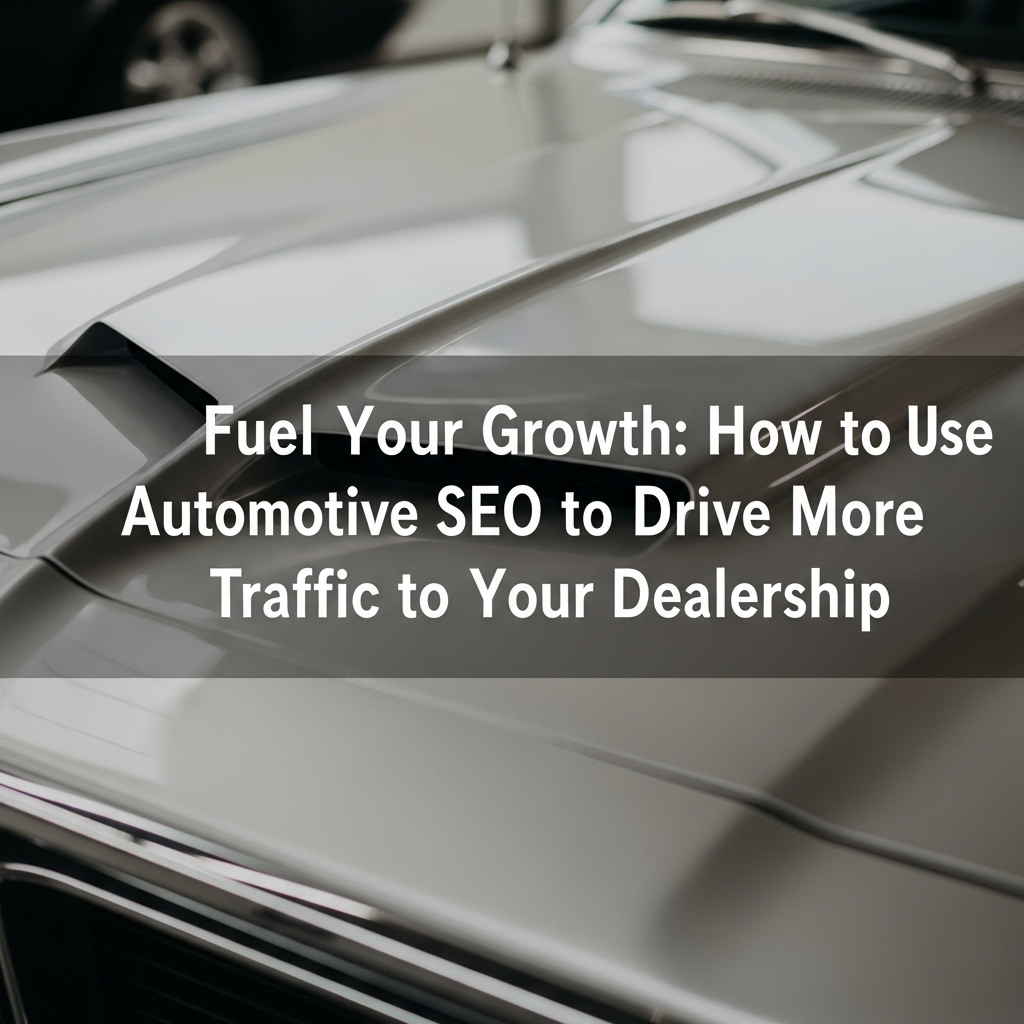Automotive SEO for Dealers: Drive Traffic and Sales

Fuel Your Growth: How to Use Automotive SEO to Drive More Traffic to Your Dealership
In today’s hyper-competitive automotive market, the location of your showroom is no longer just a physical address on a busy street. It’s a digital one, found on the first page of Google. The modern car buying journey almost always begins online, with a potential customer typing a query into a search bar. They might be looking for a “used Ford Explorer near me,” comparing the “best family SUVs,” or searching for “Honda service center in [Your City].” If your dealership isn’t visible at that critical moment, you are effectively invisible to the majority of your potential customers. This is where Automotive Search Engine Optimization (SEO) shifts from a marketing buzzword into an essential business strategy. It is the engine that powers your digital visibility, ensuring that when local customers search for the vehicles and services you offer, your dealership is the one they find. This comprehensive guide will steer you through the world of automotive SEO. We will demystify what it is, explore why it is absolutely critical for your dealership’s success, and provide a detailed roadmap of actionable tactics. From mastering local search to creating compelling content that builds trust, you’ll learn how to optimize your digital presence to drive more qualified traffic, generate more leads, and ultimately, sell more cars.
What Exactly is Automotive SEO?
Automotive SEO is a specialized discipline of digital marketing focused on improving a car dealership’s visibility in search engine results pages (SERPs) like Google and Bing. It’s not about generic SEO tactics; it’s a finely tuned strategy tailored to the unique goals, inventory, and local nature of the car sales and service industry. At its core, it’s the process of making your website and online presence more attractive to search engines for queries related to buying, selling, and servicing vehicles.
How does it work? Search engines use complex algorithms to “crawl” the internet, indexing websites to understand what they are about. When a user performs a search, the search engine sifts through its massive index to deliver the most relevant, authoritative, and trustworthy results. Automotive SEO involves optimizing various elements of your online presence to send strong signals to these algorithms that your dealership is the best answer for a user’s search.
These signals can be broken down into three main categories:
- On-Page SEO: This involves optimizing the content and structure of your actual website. This includes the text on your vehicle detail pages (VDPs), the titles and descriptions of your pages, the use of relevant keywords, and the overall user experience.
- Off-Page SEO: This refers to actions taken outside of your own website to impact your rankings. This is largely about building your dealership’s authority and trust, primarily through earning high-quality backlinks from other reputable websites and managing your online reputation.
- Local SEO: For a dealership, this is arguably the most critical component. It focuses on optimizing your presence for geographically-related searches. This is what helps you show up when someone searches “Toyota dealership near me” or in the Google “Map Pack.”
The key difference between general SEO and automotive SEO is the intent and specificity. You’re not just trying to rank for broad terms; you’re targeting high-intent, local customers who are actively in the market for a vehicle or service you provide. It’s about connecting your real-world inventory and services with the digital searches of people in your community.
The Cornerstone of Success: Mastering Local SEO
For a brick-and-mortar business like a car dealership, local SEO isn’t just a part of the strategy—it’s the foundation upon which everything else is built. When a potential customer is ready to take a test drive or get an oil change, they are looking for a dealership in their immediate vicinity. Your primary goal is to dominate the search results for these hyper-local queries.
Supercharge Your Google Business Profile (GBP)
Your Google Business Profile is your digital storefront on Google Search and Maps. It is often the very first interaction a potential customer has with your dealership online. Optimizing it is non-negotiable and one of the highest-impact activities you can undertake. Here’s how:
- Claim and Verify: Ensure you have full control over your profile. Google will mail a postcard with a verification code to your physical address to confirm your location.
- Complete Every Section: Don’t leave any field blank. This includes your full dealership name, address, phone number, website, and hours of operation (including special hours for holidays).
- Choose Precise Categories: Select your primary category (e.g., “Car Dealer,” “Used Car Dealer”) and add secondary categories for all your services (e.g., “Auto Repair Shop,” “Car Inspection Station”).
- Upload High-Quality Photos & Videos: Showcase your dealership in the best light. Add photos of your showroom, your service bays, your friendly staff, and high-quality images of your new and used inventory. Videos, like a virtual tour of the dealership, can be incredibly engaging.
- Utilize Google Posts: This feature is like a mini-blog within your GBP. Use it to announce new inventory arrivals, promote special offers, highlight service deals, or share community involvement stories. Posts expire, so be consistent.
- Answer Questions Proactively: The Q&A section allows anyone to ask a question about your business. Monitor this regularly and provide prompt, helpful answers. You can even pre-populate this section by asking and answering common questions yourself (e.g., “Do you offer financing?”).
Build Citations and Ensure NAP Consistency
NAP stands for Name, Address, and Phone number. Search engines use this information across the web to verify that your dealership is a legitimate, established business. Inconsistent information (e.g., listing “St.” on one site and “Street” on another, or using different phone numbers) can confuse search engines and hurt your local rankings.
A “citation” is any online mention of your NAP. Your goal is to get listed in as many high-quality, relevant online directories as possible, ensuring your NAP is identical in every single one. Key directories for dealerships include:
- Major data aggregators (like Foursquare)
- General directories (Yelp, Yellow Pages)
- Automotive-specific sites (Cars.com, Edmunds, DealerRater, KBB)
Consistently managing this information builds a web of trust around your business, solidifying your location and relevance in the eyes of Google.
Strategic Keyword Research: Speaking Your Customer’s Language
Effective SEO begins with understanding what your potential customers are actually searching for. You need to get inside their heads and target the exact phrases—the keywords—they use when they’re looking for a car or a service. Guessing is not a strategy.
Understanding Different Types of Automotive Keywords
Not all keywords are created equal. They can be categorized by user intent, which tells you where the searcher is in the buying journey.
- Informational Keywords: These are used by people in the early research phase. Examples include “Honda CR-V vs Toyota RAV4,” “what is the best truck for towing,” or “how often do I need an oil change.” Creating content around these keywords positions you as a helpful expert.
- Navigational Keywords: These are used by people who already know about you and are trying to find you. Examples: “[Your Dealership Name],” or “directions to [Your Dealership Name].” You should already rank #1 for these.
- Transactional Keywords: These are the money-makers. They are used by people who are ready to take action. They have high commercial intent. Examples: “used F-150 for sale in [Your City],” “Ford Explorer lease deals,” “schedule brake service near me.” These should be the primary focus for your main website pages (VDPs, service pages, etc.).
How to Find the Right Keywords
You don’t need expensive tools to get started. Use these free methods:
- Google Autocomplete: Start typing a search into Google (e.g., “used honda civic…”) and see what suggestions pop up. These are based on real, popular searches.
- “People Also Ask” Box: This section in the Google search results shows you related questions that users are asking. This is a goldmine for blog post ideas.
- Your Own Team: Talk to your sales and service staff. What questions do customers ask them every day? What are the most common concerns or comparisons they hear? This is an invaluable source of real-world keyword ideas.
Once you have a list of keywords, map them to specific pages on your website. Transactional keywords go on your inventory and service pages. Informational keywords are perfect for blog posts and resource guides.
On-Page SEO: Optimizing Your Digital Showroom
Once you know what keywords to target, you need to integrate them naturally into your website. This is on-page SEO—the practice of optimizing individual web pages to rank higher and earn more relevant traffic.
Title Tags and Meta Descriptions
The title tag is the blue, clickable headline that appears in the search results. The meta description is the short snippet of text underneath it. These are your first impression on the SERP and act as your digital ad copy. They need to be compelling to entice a click.
- Title Tag Formula: A great formula is “Primary Keyword | Secondary Keyword | Your Brand Name”. For example: “New & Used Chevy Silverados for Sale | Truck Deals | Bob’s Chevrolet”.
- Meta Description Best Practices: While not a direct ranking factor, a good meta description improves your click-through rate. Briefly describe what the page is about, include your target keyword, and end with a call to action like “View Inventory” or “Schedule Service Today.”
Optimizing Key Website Pages
Your website structure is critical. You need dedicated, optimized pages for every part of your business.
- Vehicle Detail Pages (VDPs): This is where the conversion happens. Don’t just use the stock manufacturer description that every other dealer uses. Write unique, descriptive copy for each vehicle. Highlight key features and benefits. Use high-resolution photos from multiple angles and consider adding a video walkaround.
- Service Department Pages: Don’t just have a single “Service” page. Create individual pages for each major service you offer: “Oil Changes,” “Brake Repair,” “Tire Rotation,” “Battery Replacement,” etc. Optimize each page for local search terms (e.g., “Honda brake repair in [Your City]”). This allows you to rank for a much wider range of service-related queries.
- Model-Specific Pages: Create pages dedicated to the most popular models you sell (e.g., a “Ford F-150” page or a “Toyota Camry” page). These pages can house your current inventory of that model, link to reviews, and provide key specs, becoming a central hub for that vehicle.
Content Marketing: Building Trust and Attracting Buyers
Modern SEO is about more than just targeting high-intent buyers. It’s also about attracting customers who are still in the research phase. Content marketing is how you do this. By creating helpful, informative content, you build trust and establish your dealership as a go-to automotive authority in your area.
Blog Content That Drives Traffic
Your dealership’s blog is a powerful tool for capturing informational search traffic. Instead of just writing about sales events, create content that answers your customers’ questions.
- Vehicle Comparisons: Write detailed comparisons of the models you sell against their top competitors (e.g., “Exploring the 2024 Honda Pilot vs. the 2024 Kia Telluride”).
- “Best of” Lists: Create locally-focused lists that are genuinely helpful (e.g., “The 5 Best Commuter Cars for [Your City]’s Traffic” or “Top 3 Family-Friendly SUVs for Weekend Trips from [Your City]”).
- How-To and Maintenance Guides: Provide value to current and future service customers with articles like “5 Signs Your Brakes Need to Be Replaced” or “How to Check Your Tire Pressure.”
- Financing and Leasing Explainers: The financial aspect of car buying is confusing for many. Create simple guides like “Leasing vs. Buying: Which is Right for You?” or “Tips for Securing a Car Loan with a Low Credit Score.”
In every piece of content, be sure to link internally to relevant VDPs or service pages on your site. For example, in a post about brake maintenance, link directly to your “Schedule Brake Service” page.
Technical Health and Performance Measurement
Finally, there’s the behind-the-scenes work of technical SEO. You can have the best content and local profiles in the world, but if your website is slow, broken, or hard for Google to crawl, your efforts will be wasted.
Crucial Technical SEO Factors
- Mobile-First Experience: The majority of car research now happens on a smartphone. Your website must be fully responsive and easy to use on a small screen. Test it yourself. Can you easily browse inventory and fill out a contact form on your phone?
- Page Speed: A slow-loading website is a major turn-off for users and a negative ranking signal for Google. Use Google’s PageSpeed Insights tool to test your site’s speed and get recommendations for improvement. Compressing images is often a quick win.
- Schema Markup: This is a type of code you add to your website to help search engines better understand your content. There are specific schema types for `AutomotiveDealer` and `Vehicle` that can help you get rich snippets in the search results, like price, mileage, and availability shown directly on Google.
How to Measure Your SEO Success
SEO is not a “set it and forget it” task. You need to track your performance to see what’s working and where you need to improve. Set up Google Analytics and Google Search Console (both are free).
Key metrics to monitor include:
- Organic Traffic: The number of visitors coming to your site from non-paid search results. Is it increasing over time?
- Keyword Rankings: Use a rank tracking tool or Google Search Console to see where you rank for your most important transactional keywords.
- GBP Insights: Your Google Business Profile provides data on how many people found you via search, requested directions, clicked to call your dealership, or visited your website from your profile.
- Leads and Conversions: Ultimately, the goal is to generate leads. Track how many phone calls, form submissions, and chats originate from your organic traffic. This is the true measure of your SEO ROI.
Conclusion: The Road to SEO Success is a Journey
Implementing a robust automotive SEO strategy is no longer optional for dealerships aiming for sustainable growth. It is the most effective, long-term method for attracting qualified, local customers who are actively looking to make a purchase. As we’ve explored, success hinges on a multi-faceted approach. It begins with a rock-solid foundation in local SEO, centered around a perfectly optimized Google Business Profile and consistent business citations. From there, it expands into understanding your customer’s mindset through strategic keyword research and applying that knowledge to your on-page elements, crafting a website that is both user-friendly and search-engine-friendly. But it doesn’t stop there. By embracing content marketing, you transform your dealership from a simple vendor into a trusted local authority, building relationships with customers before they even think about stepping onto your lot. Finally, ensuring your website is technically sound guarantees that all your hard work is accessible and performs at its peak. SEO is not a sprint; it’s a marathon. It requires patience, consistency, and a commitment to providing genuine value to your online audience. By following the strategies outlined in this guide, you can move your dealership out of the digital shadows and into the pole position of your local search market, driving a steady stream of traffic that converts into real-world sales.


 Search ads
Search ads Mobile ads
Mobile ads